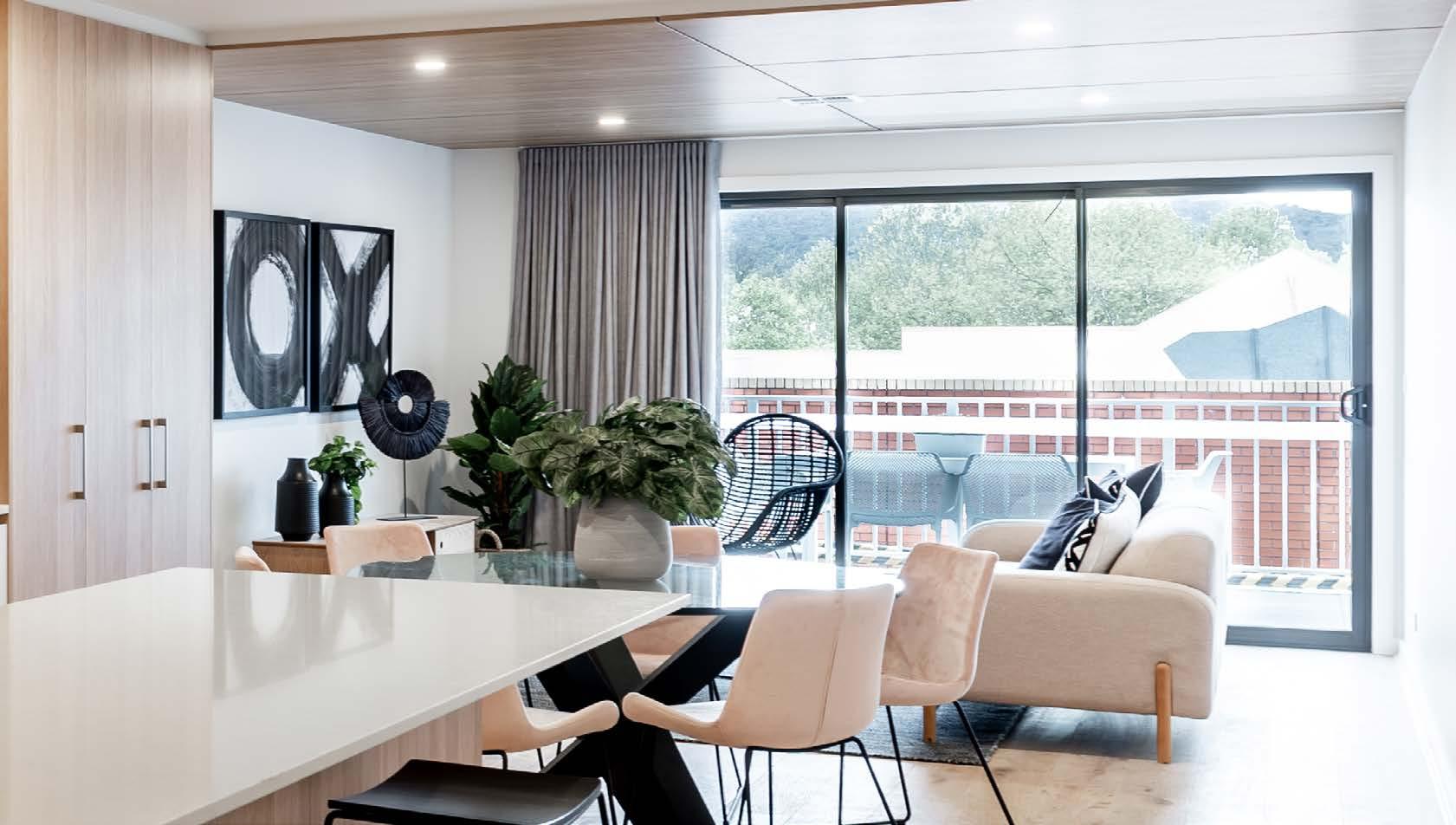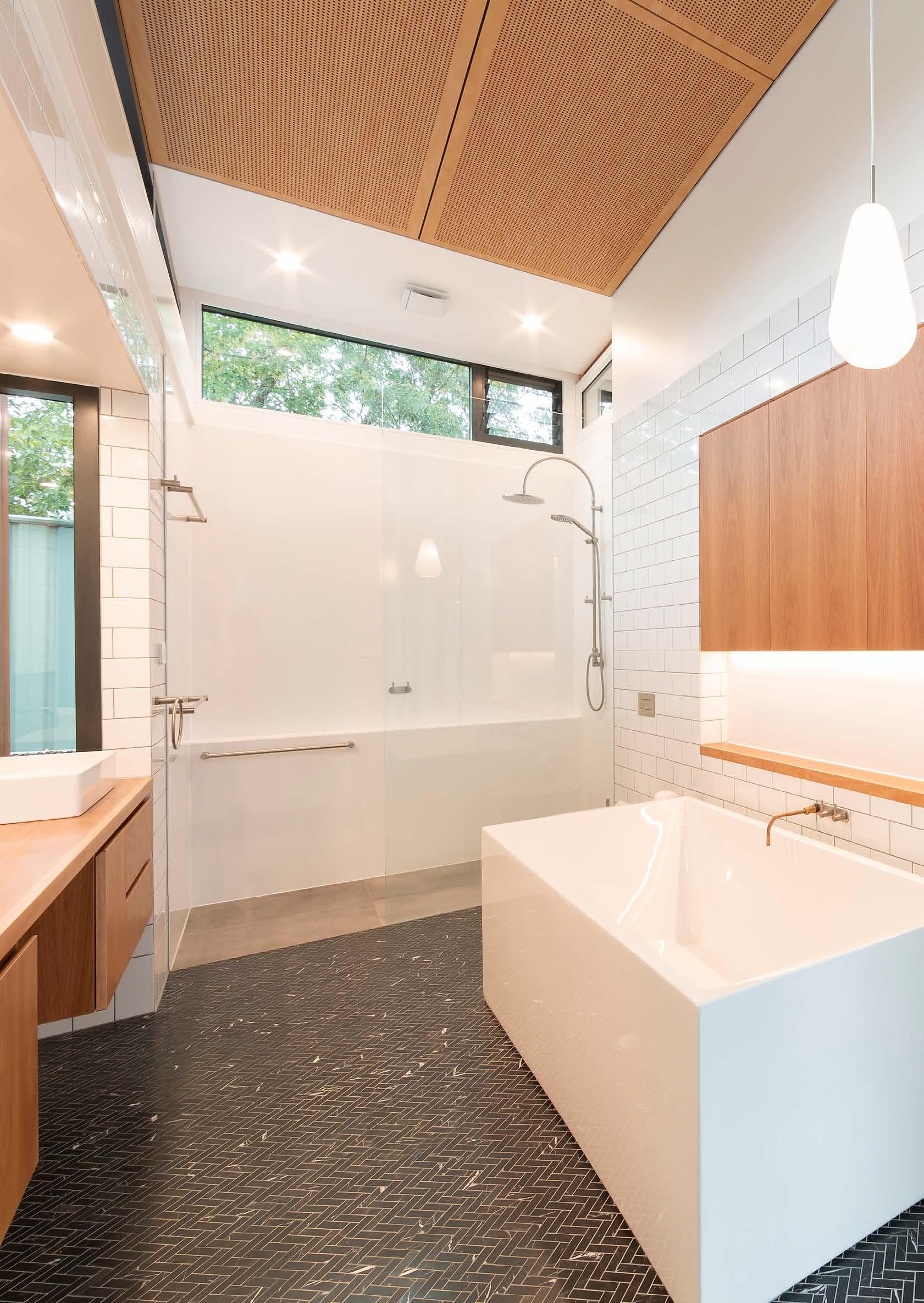
6 minute read
ARRANGING FINANCE
from BUILD 2021
FINANCE
Preferred Builders, Paul Tilse Architects and Braithwaite Innovative Joinery, Forrest
BUDGET
Financing your new home build or extension project can be achieved in a number of different ways, depending on your financial capacity and the size of your project. You should develop your budget and speak to your preferred financial institution if you are borrowing money to pay for the build, before you engage a builder. When engaging a builder, you should discuss the items that will be included in the building contract. Make sure that this discussion includes any preliminary costs, such as soil tests, preparation of plans, building approvals and consultant fees. There might be expensive items that are not included in the building contract such as landscaping, blinds and curtains, or even floor coverings. It is important to also understand which costs are fixed, and which costs may change. Your builder or your lawyer can explain the difference to you. THE STARTING POINT IS TO DEVELOP A REALISTIC AND ACHIEVABLE BUDGET.
If you are buying land and building a new home, you will also need to consider government fees and other costs associated with the build, which can include: • Stamp duty • Conveyancing costs • Government record searches
• Registering plans • Lodging a development application • Applying for a building approval • Various certificates and inspections • Engaging a building certifier Your budget should also include other costs such as rental payments (or other mortgage payments) while your new home is under construction, as well as moving costs. It is recommended that you include a contingency or reserve in your budget for any unforeseen items or cost variations that may be required during the building process. IT CAN TAKE MONTHS TO OBTAIN FINANCE IN SOME CIRCUMSTANCES. MAKE SURE YOU START THE PROCESS EARLY.
CHOOSING A MORTGAGE LENDER
When it comes time to choosing a mortgage lender, there are two common options you have when searching for the financial institution to assist your needs: • Mortgage broker – a mortgage broker can help you to find a variety of loan options from different lenders. Essentially, a mortgage broker acts as an intermediary between a lender and a borrower.
• Choose a lender based off your own research – while this can take more time than using a mortgage broker, completing your own research in order to choose a lender and loan type may be your preferred option. Consider and compare different financial institution’s fees associated with a mortgage. Some common fees are:
• Application fees • Valuation and lender’s fees
• Lender’s mortgage insurance • Exit fees
• Monthly or annual fees to keep the account open It’s also important to consider what features you would like your home loan to have. Some features include:
• Ability to redraw – if you make additional payments you can choose to ‘redraw’ that money back • Offset accounts – money in an offset account can allow you to reduce the interest rate you pay on your loan

If you are looking to purchase land, build a new home or buy an existing property, you may be eligible for a concession scheme in ACT, NSW or nationally.
ACT:
Home Buyer Concession Scheme If you are purchasing a home or land in the ACT, you may be eligible to pay no stamp duty. Applicants must meet certain eligibility criteria. Owner Occupier Duty Concession Home buyers in the ACT planning to purchase and live in a new property may be eligible for the following concessions for contracts exchanged between 4 June 2020 and 30 June 2021:
• No stamp duty on single residential dwelling blocks. • No stamp duty on off-the-plan unit (unit-titled apartment and townhouses) purchases up to $500,000. • An $11,400 stamp duty reduction for off-the-plan unit (unit-titled apartment and townhouses) purchases between $500,000 and $750,000. Applicants must meet certain criteria to be eligible for the scheme. Further information on both schemes is available at www.revenue.act.gov.au. NSW:
First Home Owner’s Grant (New Homes) scheme (FHOG) If you are buying or building your first home in NSW, you may be eligible for a $10,000 grant under the First Home Owner’s Grant (FHOG) scheme. The scheme only applies to buying or building a new home. First Home Buyer Assistance scheme If you are purchasing an existing home, a new home or vacant land in NSW you may be eligible to apply for an exemption or reduction of transfer duty charges. Applicants must meet certain criteria to be eligible for the scheme. More information on both schemes can be found on the NSW Government’s website www.nsw.gov.au.
Chase Building Group Canberra, Braddon

NATIONAL:
First Home Loan Deposit Scheme Under the Australian Government’s First Home Loan Deposit Scheme, eligible first home buyers can purchase or build a new home with a deposit of as little as 5% without having to pay lenders mortgage insurance (lenders criteria apply). Eligible borrowers can use the guarantee in conjunction with other government programs. Places for this scheme are limited to 10,000 for the 2020-21 financial year and applicants must meet certain criteria to be eligible for the scheme.
Further information can be found at www.nhfic.gov.au. HomeBuilder
Eligible owner-occupiers can apply for the HomeBuilder grant to build a new home or substantially renovate an existing home. At the time of writing, the program will run until 31 March 2021 and a $15,000 grant applies for building contracts signed between 1 January 2021 and 31 March 2021, inclusive. Applicants must meet certain criteria to be eligible for the scheme. For more information go to www.treasury.gov.au.
Information is correct at the time of publication but is subject to change throughout the year
CREATING GREAT PLACES, WHERE COMMUNITIES THRIVE
The Suburban Land Agency pride ourselves on delivering sustainable urban spaces that bring people and businesses together. Our developments aim to balance social, economic and environmental benefits for all Canberrans.
Our community development programs, such as Mingle, support the residents of our neighbourhoods so that their lives in the community flourish. We celebrate their diversity and help them feel welcomed in their new homes. Learn more about our range of communities across Canberra and discover your new home.
suburbanland.act.gov.au


LAND AVAILABILITY IN THE CANBERRA REGION
Finding suitable, affordable and well located land in the Canberra region that is ready for building can occur in a variety of ways. The ACT Government owned Suburban Land Agency develops and sells a significant amount of available land in the ACT. You can read more about the land available for purchase from the Suburban Land Agency on their website – www.suburbanland.act.gov.au. There are also a number of “Mr Fluffy” remediated blocks that are available for purchase from the ACT Government. These blocks are located throughout Canberra. More information on availability is located on the Suburban Land Agency website. Land is also being developed in the ACT and surrounding region by private developers, or in a joint venture with the Suburban Land Agency. Information about current land availability is identified on the below map.
Taylor
Gungahlin Throsby
Ginninderry*
Whitlam
Denman Prospect*
Wright
Belconnen
Coombs
Weston Creek North Canberra
South Canberra
Woden Valley
South Jerra*
* Display Village
Tuggeranong
Googong*
Insight
The Insight you need for the communities that you love

Adding value has always been central to everything we do. That’s why we’ve recently created an online property research tool that gives you access to our comprehensive series of insights and resources. Insight is the culmination of more than 30 years’ experience and active involvement in creating connected, sustainable and vibrant communities that add genuine and lasting value to the people who live within them.
By sharing our insights, we hope to contribute towards a better future for all Australians wanting to fulfil their dream of owning a quality home within a connected community.






